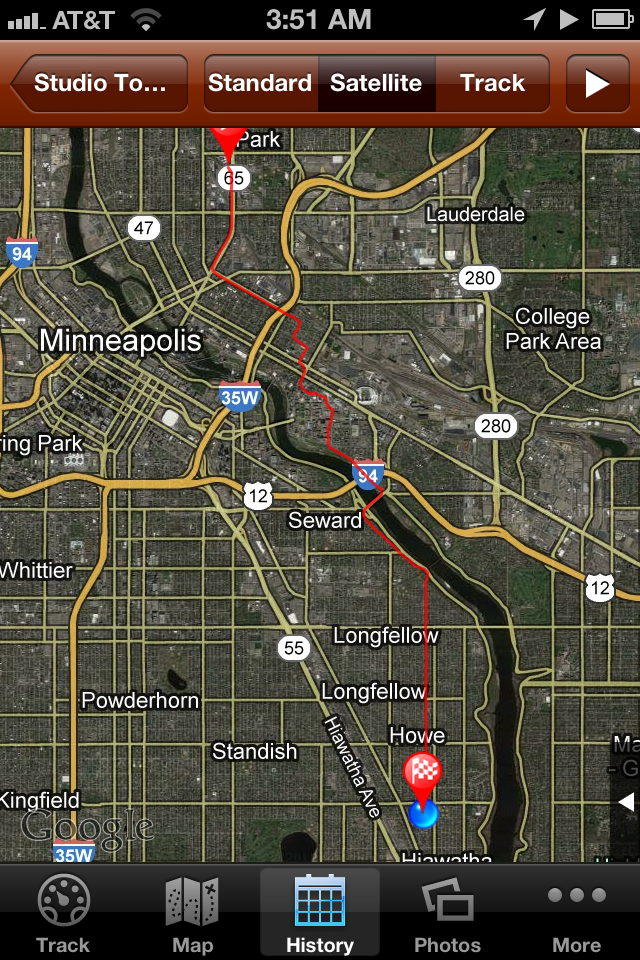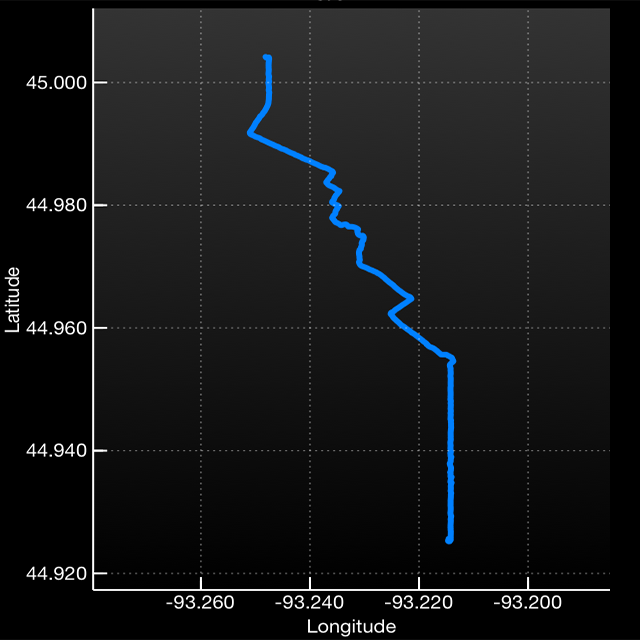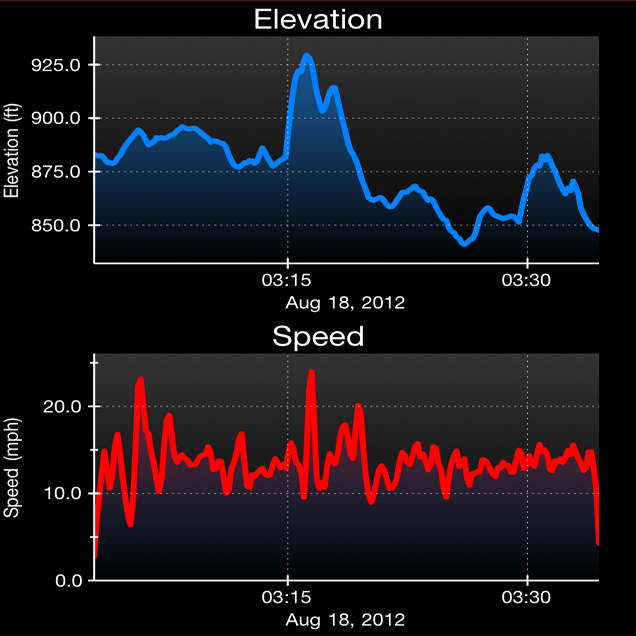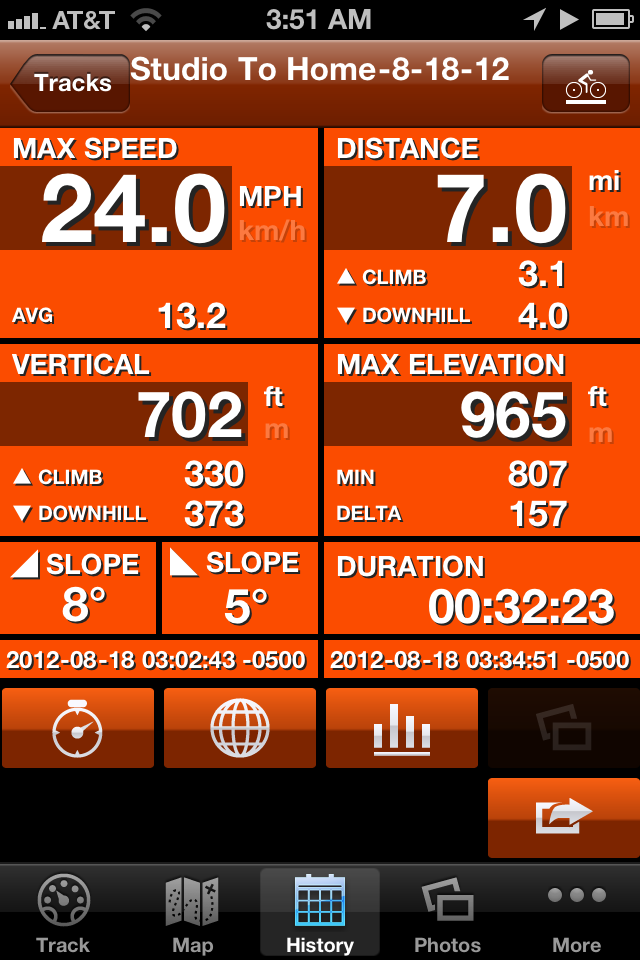Riding home from the studio was always best after 3:00am. A few things determined whether it was a typical ride, a challenging ride, or an exceptional one, including weather, wind, activity in the university district, my mood and hunger level. Sometimes I didn’t feel like riding home, but short of calling a cab, it was the only way back. Summer night rides were the best part of my day. It was often warm and humid at that hour which made it smell like Florida. After shouldering my bike from the second floor to the loading dock outside, I situated my gear and chose music for the ride. I usually selected something upbeat, like Jeff Beck, Tom Scott, or Tom Petty. That night I chose the Nebraska album by Springsteen. I tolerated the first three songs but eventually lost momentum, like my tires were cement. I hit both brakes and skidded to an abrupt stop and chose something else.
Five Rabbits :: The middle third of the route is through the university district, which includes a huge green space with shade trees and a sidewalk that splits it diagonally. I had a lot of negative chatter in my head all day including the ride home — enough negativity that I spoke out loud. “Yeh? Well, if you’re real, prove it, make a rabbit appear.” Poof. A rabbit appeared almost immediately on the grass to my right. I was surprised, but I frequently see rabbits on my rides at night, so I wasn’t impressed. “Show me another.” Poof. Another rabbit appeared ahead to my left. “OK. That’s a coincidence. Show me another.” Poof. Another rabbit appeared. Now I was startled. “This is a coincidence. If you’re really listening, do it again.” I rode a bit further and Poof, Poof, there were two more rabbits sitting next to each other. Five rabbits appeared in that space, on command. I told my wife about my encounter the following day and she didn’t think it was a coincidence.
Ronald McDonald House :: I usually rode past the Ronald McDonald House on campus. There aren’t any signs of activity at that hour, but I’d been fooled many times when riding by because there’s a life-size fiberglass statue of Ronald McDonald sitting on a bench by the front entrance. During the daylight hours you can see its bright colors, but in the dark while its back lit from the lobby windows, it looks like an actual person. The children and young adults who stay there have serious medical situations, so they need to be close to the university hospital for long periods of time and this place allows families to be together. Two nights within the same week, I saw two figures sitting on the bench, not just the statue silhouette. As I rode closer, I saw an older man cradling a young child. I waved to them, and the man waved back. From that night forward I waved every time I rode by even if just the statue was present.
Raccoon :: I entered the Seward neighborhood after crossing the bridge that spans the Mississippi River. Five or six blocks ahead I noticed a dark shape in the middle of the road. It could be anything and it was something to pay attention to as I sped towards it. A block away I figured it was a cat and needed to prepare in case it bolted in front of me at the last minute. I’d seen a lot of cats over the years lying in the middle of the road absorbing the last of the heat. As I got closer, I began to yell out and clap my hands. It finally heard me because it started to shift but didn’t move out of the road. Twenty feet away I realized it was a raccoon and as I got close, it turned, faced me, stood up on its hind legs and swatted at me as I passed.
— — — — — — —
“Like a whisper In the dark.” David Byrne
— — — — — — —
Songs :: Night Ride Home by Joni Mitchell, Bad by U2, Strangered In The Night by Tom Petty and the Heartbreakers, Pump It Up and Moods For Moderns by Elvis Costello and the Attractions
© C. Davidson





